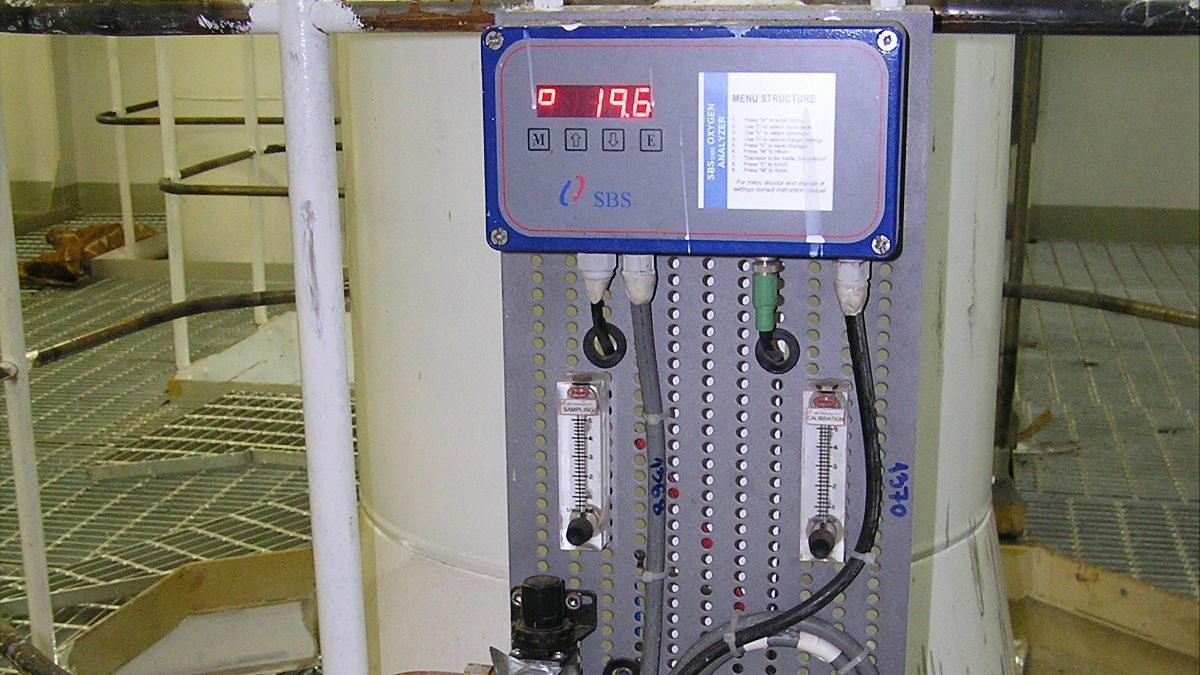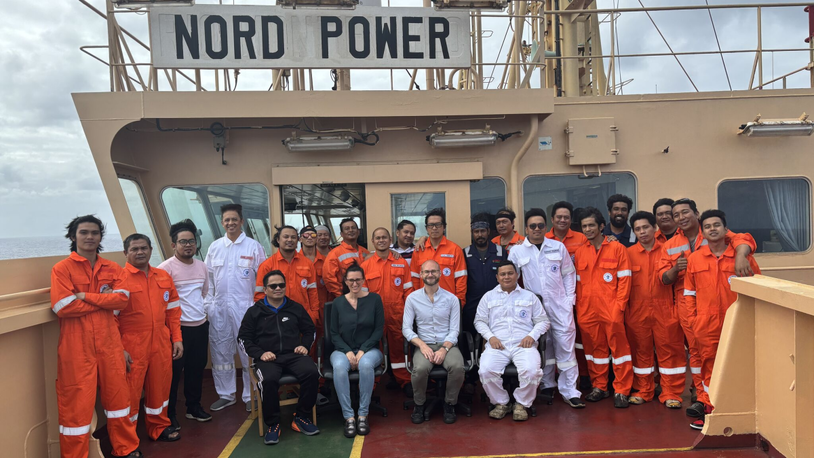Business Sectors
Events
Contents
When boilers go bad
Automated maintenance and regular inspections of boilers can save downtime for all types of vessels
Although boiler room accidents are rare, they can be catastrophic when they do occur. As highly pressurised drums, boilers are prone to blow-back or, in the worst case, exploding in the wrong combination of circumstances.
However, boilers do not have to explode to cause problems. When a small boiler-room fire broke out on Holland America’s 82,348gt Westerdam in June 2014, it forced a brief return to port in Seattle so that damage could be assessed by the Coast Guard and the vessel cleared.
Some boiler deficiencies may not be immediately obvious, but they can easily put the ship’s propulsion system in jeopardy. “The effects of the condition of the boiler on fuel efficiency are widely underestimated,” pointed out DNV GL Maritime’s principal engineer for hull, materials and machinery Hamid Farahany in a mid-2019 study.
Citing a string of unwanted problems including pitting, overheating, oil scale, impingement of flame, low water levels, soot combustion and cold corrosion from the gas side of the boiler, he concluded: “The majority of these symptoms can be tracked back to poor water condition and insufficient maintenance. The lack of a stable, passive magnetite layer on the metal surfaces on the water [or] steam side inside boilers appears to be the predominant mechanism behind many of the reported defects.”
The benefits of smooth-working boilers fall straight to the bottom line. Bergen-based shipowner Kristian Gerhard Jebsen has found that the ability to carry out waterside boiler inspections during a voyage saved two days compared with the work being done in port. “This resulted in savings equivalent to 48 hours of reduced off-hire time, as well as 48 hours of saved port and anchorage dues,” the company’s senior vessel manager Ivo Legein reported.
Fortunately, automated surveillance and management systems are improving all the time as shipowners look to preventative measures. Even the much-neglected auxiliary boiler has acquired its own automated maintenance system. “Auxiliary boilers are typically not a top item on the maintenance agenda, points out Mr Farahany. “Equipment with moving parts is always a greater concern [for crews].”
That’s why the Wilhelmsen group has developed a smart boiler water-dosing system that reduces the risk of corrosion and poor water quality. The results speak for themselves. According to Wilhelmsen, none of the 150 vessels that have been given the BMON (for boiler monitoring) classification developed by DNV GL has reported any significant problems with boiler conditions.
“Consistent, accurate monitoring and dosing helps eliminate the unnecessary risks of premature boiler deterioration or, in the worst cases, failure,” says Wilhelmsen ships service manager Rune Nygaard. At the time of writing, DNV GL and Wilhelmsen were working jointly towards obtaining a full type approval for the automated smart boiler dosing system, with Wilhelmsen qualifying as an approved service supplier.
Raising the game
Meanwhile the BMON classification is helping raise the game. Originally developed in 2012 as a response to frequent boiler breakdowns, the standard is being constantly improved in the light of real-life experience. As DNV GL pointed out in a mid-2019 paper (somewhat tongue-in-cheek): “It all boils down to simple corrosion.”
BMON targets deposits and rust on the water and steam side of auxiliary boilers. Often overlooked by enginerooms because of other priorities, these are the root causes of pressure part failure, as DNV GL’s surveyors have found during decades of inspections.
Thus BMON has been designed to address the root causes of such problems. First, a passive magnetite layer – essentially, a thin film of iron oxide – must be formed on all steel surfaces. And then it must be properly maintained; a procedure that requires frequent checks of the condition of the water. “These two measures alone should minimise the risk of corrosion on the steam and water-side surfaces,” according to the paper.
But a more conscientious attention to water treatment delivers another benefit. “[It] prevents the formation of scale and other deposits, ensuring proper heat transfer at all times,” adds the paper. “This in turn improves fuel efficiency and avoids heat stresses or overheating and cracking of the furnace wall, the top plate and the screening tubes.”
And the conventional noon reports no longer do the job, mainly because they are considered too arbitrary to nip a problem in the bud. “[They] frequently fail to expose technical issues in a timely manner,” explains the paper. “The BMON rules therefore sharpen the focus on regular internal inspections to detect potential risks, such as flame impingement from a burner, before they result in a defect.” Of necessity, prevention under BMON requires more equipment, such as salinometers, oil content sensors and hot well temperature transducers.
Constant surveillance
Maintenance systems are based on the recognition that boilers need constant surveillance. Scandinavian Boiler Services’ (SBS) G5000 line is based on what the company describes as “dynamic load-dependent monitoring” that is designed to anticipate problems long before they happen. The G5000 line is focused on water circulation flow, pressure drop, temperatures and temperature differences (not the same thing) and thermic stress.
But predictive maintenance has its limits and sometimes boilers simply break down and need repair, as SBS can vouch. In the last 25 years its technicians have undertaken no less than 3,000 repairs of all types of marine boilers and related systems. Normally, their expertise is called upon several times a week, anywhere in the world.
These crisis calls often require an entire team of experts. When the exhaust gas boiler on Beluga Intonation, a general cargo vessel, went down during a voyage, the job required a foreman and eight tradesmen in the form of boilermakers, fitters and certified welders. They were able to bypass and repair the main boiler, install a portable boiler and reconnect the original one, nearly all of it while the vessel was at sea. “[There was] no delay or loss of charter for the vessel,” reports SBS.
Boiler repair is a multi-functional operation that requires flying in technicians located at strategic spots around the world. SBS, for example, maintains repair hubs in Fort Lauderdale, Pandrup in North Denmark and Singapore. And instead of flying bulky and heavy spare parts at great expense from distant manufacturers, SBS holds a wide range of certified and tailor-made equipment in its hubs; everything from different types of tubes and steam drums to superheaters.
Baltic Marine, a division of Florida-based Trident Maritime Systems, also runs its own rescue missions, that routinely fix exhaust gas- and oil-fired boilers and economisers, and replace refractories among other work to get the vessel back up to speed.
In a fairly typical mission, one of Baltic Marine’s flying squads was recently dispatched to a cruise ship to replace 51 furnace wall tubes in the main boiler. Several tubes were found to be leaking and the chief engineer issued a request for help. In a major job, refractories and tubes were replaced, a new refractory was installed on the furnace floor, all pin tubes were checked for cracks and new insulation work done. Interestingly, a waterside inspection found that a water deflector had been installed in the wrong position and that a bolt was missing, restricting the water flow in the furnace wall tubes. In short, it was an accident waiting to happen. All the work was done at sea so that as little time as possible was lost.
Baltic Marine also sends out teams equipped with fibrescopes, ultrasonic meters and other devices to provide detailed assessments of the condition of a boiler before it is too late. “Early-stage problems are most of the time related to oxygen corrosion or pitting, due to low feet water temperature or wrong chemical dosing,” says general manager boiler division Marcel van de Rijt. “We also see a lot of oil contamination in the waterside due to leaking heating coils or heat exchangers and this causes overheating and cracking of the boiler materials.”
As the deadline for low-emission propulsion looms, boiler makers are constantly improving designs. One of the latest models from Saacke, the CMB-VF-LONOX, is really two boilers in one. Developed for ships with multi-boiler plants such as chemical tankers, LNG carriers and passenger ships, it is a vertical combination-type system that eliminates the need for an entire auxiliary boiler plant for providing variable steam. The main benefit is that the auxiliary boiler is always hot and ready to deliver high steam. And, complying with IMO’s imminent regulations, the system works on all forms of low-emission combustion, right up to ultra-low nitrogen oxide.
The era of scrubber-equipped ships is also influencing boiler design. When Spanish shipping group Naviera Elcano’s new 37,000 dwt chemical tanker hits the water in late 2019, it will be fitted with Saacke-manufactured scrubbers suitable for emission control areas as well as an auxiliary and combination boiler system. The latter will be used to generate steam for heating heavy fuel oil and water, and for cleaning the charging tanks.
Similarly, in the post-2020 era, boilers are being redesigned for use with low-emission fuels. Norwegian manufacturer Parat’s range of boilers covers those fired by any kind of combustible fuel or, if necessary, a combination of multiple fuels.
Although they play second fiddle to engines, boilers are becoming increasingly sophisticated, especially those designed for LNG carriers where loss of gas is an important consideration. Japan’s Volcano group has purpose-designed the SFFG2 combustion burner for main boilers in the fast-growing LNG fleet. The system can harness boil-off gas as fuel and, complying with emissions regulations, the burner can be configured as a single-fuel gas burner. A rugged product, the burner is also being used in the offshore oil and gas industry, notably for floating production and storage vessels and for floating storage and regasification units.
Common causes of boiler room events
- Fuel may drip inside the hot surfaces of the furnace and ignite.
- If the water levels get too low, for instance if the gauge glass is too dirty or cracked to show the true level, the boiler can quickly overheat.
- Enginerooms can become lax about observing standard safety procedures, such as sticking to the recommended intermittent firing pattern when the boiler is started from cold; a common cause of ‘thermal shock’.
- Flammable soot is allowed to gather on the tubing system.
- All too often, say insurers, enginerooms will cut corners, such as failing to pre- and post-purge the furnace before the boiler is fired.
Related to this Story
Women in Maritime Today: Elin Saltkjel says no day working in maritime is dull
Events
Maritime Environmental Protection Webinar Week
Cyber & Vessel Security Webinar Week
The illusion of safety: what we're getting wrong about crews, tech, and fatigue
Responsible Ship Recycling Forum 2025
© 2024 Riviera Maritime Media Ltd.
















